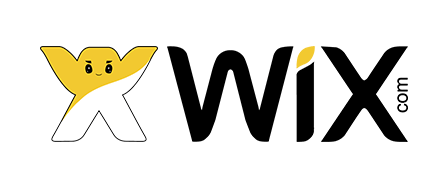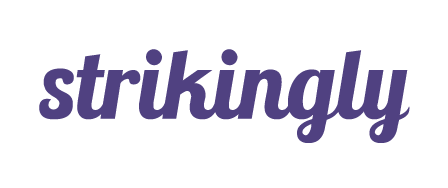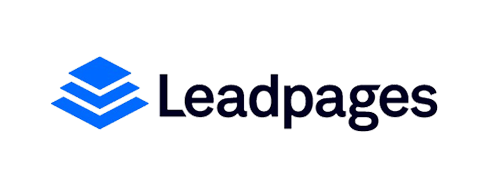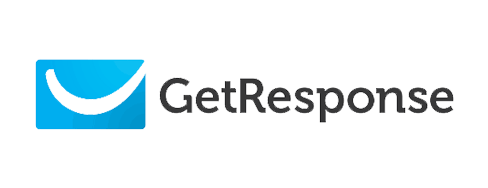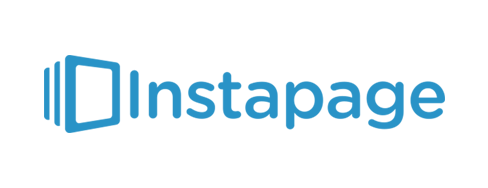Oftentimes, B2B organizations are skeptical about allocating significant budgets to their online marketing activity. When it comes to advertising online, B2B marketers are faced with quite different challenges to their B2C counterparts. Typically, the B2B conversion cycle is much longer, leading to an increased difficulty in measuring and attributing the investment in online channels to their return. There is also a great difference between B2B and B2C advertising goals, as a B2B marketer’s main goals are:
- To create strong recognition of the brand, followed by awareness of the product or service, amongst the target audience.
- To target the advisers, decision makers and those responsible for the decision making process within the target business.
- To collect contact details of leads.
- To nurture leads through the conversion funnel, passing on strong sales opportunities to the sales department.
Many businesses would be surprised to learn there is often a large and relevant inventory for B2B fields, indicating the opportunity to enter an online lead acquisition strategy and take advantage of advanced targeting options across Google, Facebook, LinkedIn and other channels. In regards to Facebook, while many B2B marketers are skeptical about the channel, a slew of advanced targeting methods offer a fertile playground for the sophisticated B2B marketer.
Marina Mevzos, Director of Advertising Services at Seperia, recommends the following channels for B2B online marketing campaigns, and explains how to approach and best target your audience on each platform.
Gmail Sponsored Promotion
Gmail Sponsored Promotion (GSP) is an exciting platform for B2B marketers. GSP allows for ad placements within a user’s Gmail inbox, listed just like an email in their inbox, but placed above the list and with an ‘Ad’ tag next to it. When the user clicks on the ad placement, the full ad opens in the form of an email. From there, users are invited to take an action either within the email ad or are directed to an external landing page.

Targeting Options
The platform offers a range of targeting options similar to those available on the Google Display Network (GDN). These include age, location, gender, device, interests, keywords and so on. The beauty of keyword targeting in GSP, is that you can target users based on the content of the emails they receive, that is, target certain niche keywords that would be found in the subject line, actual content of the email and even the sender.

Benefit to your B2B Campaign
This is where it gets sweet, with a targeting option that is unique to GSP – allowing you to identify users based on the domain from which they receive emails. This targeting option is a great tool to place you one step ahead of your B2B competition. Domain targeting allows you to directly market to your competitor’s clients, subscribers of relevant industry publications and much more.

- Having clicked the call to action (or anywhere on the ad), I am taken to the above landing page.
Google Display Network
The Google Display Network (GDN) is the largest ad network on the web, allowing advertisers to display banner ads, text ads, video ads and lightbox (interactive) ads. With over 2 million sites (including for example foxnews.com, seekingalpha.com, forbes.com), the network poses an array of opportunity for businesses, enabling you to tap into audiences you have not reached before. Marina suggests viewing the GDN as a support pillar for your branding campaigns and therefore recommends this marketing channel for B2B companies trying to build awareness for their product or service.
Targeting Options
When setting up your ad group, the Google Display network offers a range of targeting options, such as by keywords or topics, interest categories and audiences. Whilst these options are quite broad, they can help you discover new placements for your ads. To really hone in on your preferred audience, we recommend taking advantage of google’s managed placements tool which allows you to select the exact website you want your ads to appear on. For example a fintech company targeting small businesses may broadly target users who have interests in personal finance, small business news, technology and so forth. Or select to advertize on the most relevant sites to their product such as www.money.cnn.com/smallbusiness, www.smallbiztrends.com and www.kiplinger.com.
Benefit to your B2B Campaign
Some may argue that GDN ads are not the perfect fit for B2B advertisers, given that a user who visits a specific website on the GDN isn’t there to engage with your brand, but rather catch up for example on the latest news on the economy (such as on nytimes.com). But what we are forgetting is the potential hundreds or thousands of users that will be exposed to your company’s ad (whilst reading an article) with you paying only for the actual clicks! (CPC). Emphasizing again the boost that a display network ad can give to your product, which can be especially beneficial during the decision making step of the B2B conversion cycle. And this is where the pièce de résistance of the GDN comes in- Remarketing.
Remarketing
Remarketing is probably one of the most potent tools to B2B marketers who need to keep their brand top of mind during long conversion cycles. Not only can you target users who entered your site (and therefore are familiar with your brand), but you can target them based on the actions they took within your site. With smart remarketing (explained below), you can weed out the irrelevant users and target leads that are in essence more likely to convert. For example, User 1 enters your home page, stays for less than 30 seconds and exits without any on-site interaction. User 2 enters your home page, reads your “Product Features” page and then begins (but does not complete) filling out your “Get Product Demo” lead box. It is quite obvious that user 2 has shown more interest in your product, and remarketing gives us the opportunity to serve specific ads encouraging this user to sign up for that demo (such as a special offer upon signup).

- GDN ads retargeting users who visited www.bluevine.com
Targeting Options
As the whole purpose of remarketing is to re-target users who already visited your site, you will target users by audience. The key here is to take advantage of your Google Analytics data to create smart remarketing lists based on the type of interaction the user had on your site, or rather, exactly where they dropped off the conversion funnel. These lists will help you identify the type of ads and the message you want to send to specific audiences. That is, a user who began signing up for a demo but did not complete the form should be targeted with a different ad message to a user who completed their product demo but did not progress any further through the conversion cycle.
Benefits to your B2B Campaign
As the typical B2B decision and therefore conversion cycle is much longer than those of B2C, remarketing allows you to remind your potential client- as well as ‘tilt’ their decision making scale to your advantage- about your brand at different points of the conversion cycle. And as Marina reminds us, just as in practice it is cheaper to draw back an old client rather than search for new ones, so too is it cheaper to target a user who has already engaged with your site than begin to target a completely new online audience.
Another benefit of remarketing is that you are not only restricted to placements on the GDN- remarketing can be performed across many online platforms. You can use the GSP platform and Google Search as well as platforms external to Google such as Facebook.
Facebook Ads
Traditionally Facebook is considered as a more appropriate online marketing channel for B2C campaigns. Many would argue that the platform is not the right place to catch potential clients as when they are using Facebook, it’s not generally for business. And whilst we generally do not recommend using Facebook alone, with the right goals, campaign structure and targeting, B2B marketers can take advantage of Facebook to boost their brand’s awareness and messaging during the potential client’s conversion cycle.
Targeting Options
When it comes to finding your preferred audience on Facebook, there are a number of targeting options you can pursue:
- Behavior & Interests: When cross matched, these 2 targeting options can identify for example small business owners, as Facebook itself identifies users who exhibit the behaviors of a small business owner. And these users often share a number of common interests such as those who are interested in Facebook for Business, are Facebook admins or members of small business groups and those who are interested in the Facebook pages of companies relevant to small business such as CRM systems and email marketing software.
- Custom Audiences: This feature is especially useful for targeting users that have already engaged with your brand online, just not on Facebook. The custom audiences tool allows you to build a target audience by uploading a list of emails or phone numbers from your database- that is, anyone who has left their details on your site. Once uploaded you can cross match this list with your existing Facebook followers, or segment it by demographics and profile features such as job title, employer and more. This can help you target the business decision makers (those in higher roles) from your entire list of emails.
- Remarketing: As mentioned above, Facebook is a prime platform to re-engage potential clients who have already interacted with your site. Your target audience for remarketing can be built using either smart remarketing lists via Google Analytics or by inserting a Facebook pixel on your site.

Benefit to your B2B Campaign
By targeting each user according to their interests, demographics and behavior, Facebook allows you to really hone in on your desired audience. And in a digital world where many users exhibit a short attention span, even a lead who left their details on your site, or a user who finished their free trial but made no further purchase, can easily neglect the conversion cycle. Retargeting these leads through Facebook helps you to stay top of mind outside of the user’s typical business arena, supporting their decision making process by encouraging the user to re-engage with your brand and progress further through the conversion funnel.
When creating a campaign on LinkedIn, there are two advertising options- text ads or sponsored updates.

- LinkedIn Text Ad

- LinkedIn Sponsored Ad
We recommend using sponsored updates over text ads for a number of reasons. Sponsored updates are displayed within the LinkedIn news feed, whereas text ads occupy a small right rail placement. Sponsored updates occupy more space on the page, allowing for the use of more ad copy and a larger image making them more noticeable than a regular text ad. You can also sponsor a pre-existing update or create a new update specifically for your campaign. As a result of these factors, click through rate (CTR) for sponsored updates is generally much higher than CTR for regular text ads.
Targeting Options
Whilst LinkedIn offers a wide array of targeting options such as job title, skills, groups and company name, there are a key number of options that would best suit a B2B campaign. These targeting options are:
- Company name targeting: allowing you to directly target employees of your chosen company name.
- Industry targeting: allowing you to target individuals with differing job functions within the same industry.
- Company size targeting: segment your target audience based on the size of the company they work for.
Job Title targeting, Job Function and Seniority are additional targeting options that will allow you to reach high-level individuals on this platform.
Benefit to your B2B Campaign
As the only social networking platform dedicated solely to business, LinkedIn is a rising platform for B2B advertisers. LinkedIn offers a platform for promotion to an audience that is already in the “frame of mind” for business. Whilst the platform is not about ‘selling’ your business, it promotes the fostering of relationships by enabling your company to share relevant and useful content with its followers. Which means you can catch the decision makers and purchasers in your target audience when they are most receptive to content that will help them solve their business problems- engaging and helping them during their decision-making process.
The Challenge of Attribution in B2B Digital Marketing Campaigns
One of the most significant challenges for B2B digital marketers today is the ability to consistently attribute their online marketing activity to a financial return for their business. Longer conversion cycles in the B2B arena, multi-channel activity, as well as the common mix between online and offline channels (and the fact that the final stage of the conversion cycle takes place offline) make it harder to prove a direct connection between a conversion and the exact channel from which the lead came.
For the same reasons mentioned above, it will often take longer for B2B marketers to discover the channels that work best and those that are less fruitful. One way to overcome this, Marina suggests, is to look at micro-conversions by tagging the steps within your funnel. For example, User A leaves their details on your lead form. User B leaves their details, downloads a demo and uses the demo you provided. Having tagged both stages of the conversion cycle we can then track back to discover which online marketing channel brought the users that progressed further through the funnel (like User B) and subsequently invest further in this channel as it attracts users that are more likely to convert.
The online marketing options for B2B marketers are growing, and at a rapid pace. Whether your main goal is lead generation, brand awareness or support of the full conversion funnel, these marketing channels can help boost your activity and ultimately, your B2B sales. The question is, which mix is right for your business?
